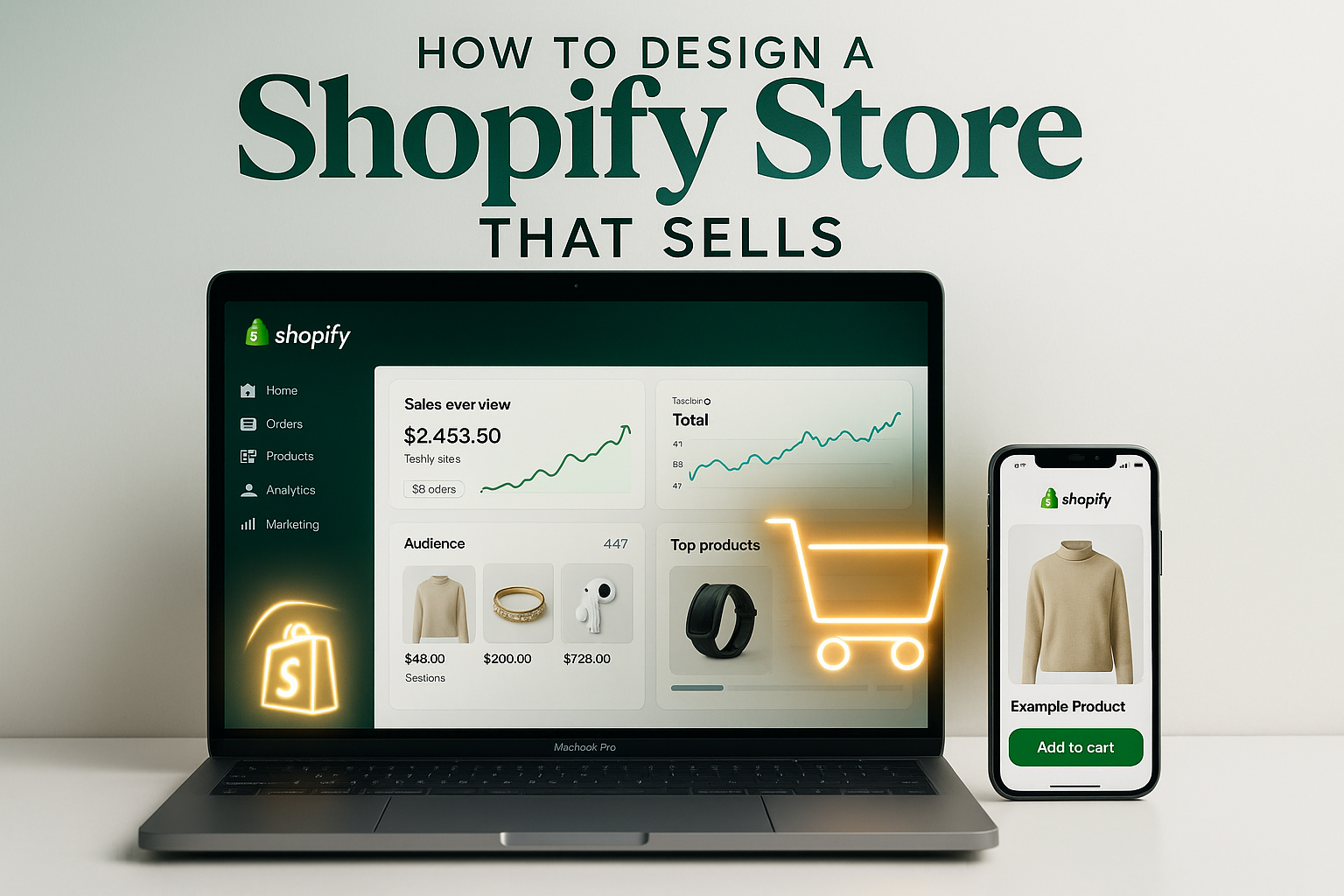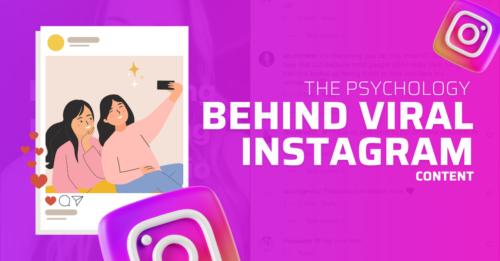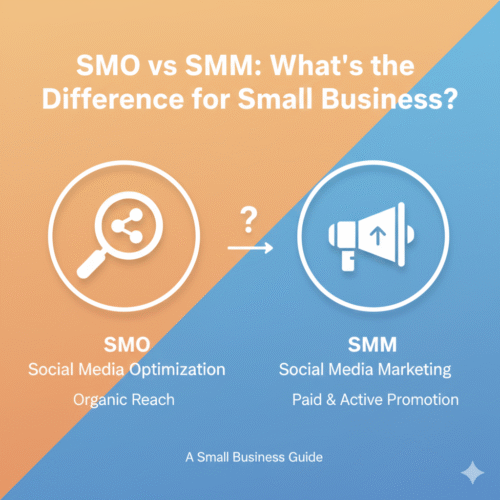Designing a Shopify store that actually drives sales is about much more than choosing a nice-looking theme. It requires strategic planning, a focus on conversion optimization, user psychology, and a seamless customer journey. In this detailed guide, we share the proven steps to help you build a Shopify store that not only looks attractive but also converts visitors into paying customers consistently.
1. Select a High-Converting Shopify Theme
Your theme is the backbone of your Shopify store’s design.
- Professional & Minimalist Design: A clean layout builds trust and directs attention to products.
- Mobile-Responsive: With mobile shopping dominating, your theme must adapt flawlessly to smaller screens.
- Fast Loading Speed: Faster sites rank higher on Google and reduce bounce rates.
Premium themes often provide conversion-optimized features such as pre-built product sections, upsell blocks, and customizable homepage layouts.
2. Establish a Memorable Brand Identity
Customers are more likely to buy from stores that feel trustworthy and recognizable.
- Consistent Color Palette: Choose colors that align with your niche and brand personality.
- Unique Logo: Keep it simple yet professional.
- Typography Choices: Limit to two fonts for readability and consistency.
- Tone of Voice: Ensure product descriptions and CTAs reflect your brand identity.
A strong identity helps you stand out in a crowded marketplace.
3. Optimize Your Homepage for Conversions
Your homepage should act as the ultimate sales funnel entry point.
- Hero Banner: Highlight your USP (unique selling proposition) with compelling visuals and strong CTAs.
- Trust Elements: Add reviews, security icons, and guarantee seals.
- Featured Collections: Showcase bestsellers and trending products.
- Clear Navigation: Guide users to categories or new arrivals.
A homepage that balances visuals with clarity encourages longer browsing sessions.
4. Design Product Pages That Sell
Product pages are where decisions are made. Every element should reduce doubt and build excitement.
- High-Resolution Images: Include lifestyle photos, zoom options, and 360° views.
- Benefit-Driven Copy: Focus on how your product solves a problem or improves life.
- Transparent Pricing: Add tax and shipping details upfront.
- Social Proof: Display customer reviews and ratings prominently.
- Urgency Triggers: Use low-stock alerts or limited-time offers.
This mix of visual appeal and persuasive text creates confidence to purchase.
5. Simplify Store Navigation and User Experience
Great UX ensures customers find products without frustration.
- Mega Menus: Organize products into intuitive categories.
- Advanced Search: Offer filters, predictive suggestions, and sorting options.
- Sticky Header: Keep cart and search buttons visible at all times.
- Breadcrumbs: Allow users to retrace steps easily.
Smooth navigation keeps users engaged and decreases bounce rates.
6. Streamline the Checkout Process
Cart abandonment is often caused by a poor checkout experience. Optimize it by:
- Offering Guest Checkout: Avoid forcing account creation.
- Progress Bar: Show how many steps remain.
- Multiple Payment Gateways: Include PayPal, Apple Pay, Google Pay, and local wallets.
- Auto-Fill Options: Save time by filling in user information.
- Security Seals: Display SSL certificates and trust badges.
A fast and secure checkout increases completion rates significantly.
7. Add Persuasive Marketing Features
In-store marketing elements boost revenue per customer.
- Upsells & Cross-Sells: Suggest related products during checkout.
- Discount Popups: Offer first-time visitor discounts or free shipping.
- Exit-Intent Offers: Trigger discounts when users attempt to leave.
- Loyalty Programs: Encourage repeat purchases through points and rewards.
These strategies turn casual visitors into long-term customers.
8. Leverage Social Proof and Engagement
Shoppers want reassurance before committing. Social proof builds instant credibility.
- Customer Reviews & Testimonials: Highlight authentic user experiences.
- User-Generated Content: Encourage customers to share photos with your products.
- Influencer Partnerships: Boost visibility and trust through endorsements.
- Live Purchase Notifications: Show real-time buyer activity for urgency.
Trust grows when customers see others enjoying your brand.
9. Implement SEO Best Practices
Organic traffic is a long-term sales driver.
- Keyword Research: Optimize titles, descriptions, and headings.
- On-Page SEO: Use structured data, meta tags, and keyword-rich URLs.
- Image Optimization: Add descriptive alt-text for better ranking.
- Content Marketing: Publish blogs, guides, and tutorials linked to products.
- Internal Linking: Direct blog traffic toward product collections.
Consistent SEO efforts build sustainable traffic and revenue.
10. Prioritize Mobile Optimization
Since most Shopify sales happen via mobile, mobile-first design is critical.
- Responsive Layout: Ensure designs adapt perfectly to small screens.
- Mobile-Friendly CTAs: Position buttons for easy thumb access.
- Fast Mobile Loading: Use image compression and lazy loading.
- Mobile Checkout: Keep forms short and payment options wide.
Mobile optimization prevents lost sales and improves customer satisfaction.
11. Use Analytics and Testing to Improve Performance
Data-driven improvements guarantee better conversions.
- Heatmaps: Track where users click and scroll.
- A/B Testing: Compare different headlines, images, or button placements.
- Conversion Funnels: Identify where shoppers drop off.
- Customer Reports: Understand behavior patterns to refine strategy.
Continuous testing ensures your store evolves with customer needs.
12. Provide Excellent Customer Support
Support is the backbone of customer retention.
- Live Chat: Give real-time assistance.
- Chatbots: Handle FAQs automatically.
- Email Support: Respond quickly to customer issues.
- Help Center: Build a detailed FAQ page.
Happy customers are repeat customers, and strong support improves trust.
Final Thoughts
Designing a Shopify store that sells involves blending visual appeal, strategic marketing, seamless navigation, and persuasive product presentation. From the first homepage impression to the final checkout click, every element should guide visitors toward purchase effortlessly. By focusing on brand identity, conversion-driven design, mobile responsiveness, and trust-building, you can create a Shopify store that doesn’t just attract traffic but also turns visitors into loyal, repeat buyers.
Follow Us | Our Services | Contact Us | Linkedin | Instagram







